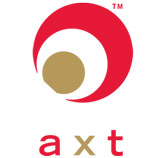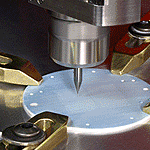- News
30 June 2011
Siemens takes 16% stake in CPV firm Semprius
The investment gives Siemens early access to what it describes as a highly promising solar power technology. Compared to conventional photovoltaics, HCPV systems are especially suitable for regions with high direct irradiation, for example along the Earth’s sunbelt, it adds.
“Participating in Semprius provides us access to trailblazing technology for clean power generation,” says Martin Schulz, VP of Photovoltaics in the Renewable Energy Division of Siemens Energy in Erlangen, Germany. “Siemens will act as a strategic investor to help Semprius scale up its innovative technology to market maturity,” he adds. Construction of Semprius’ first production facility is due to begin in July.
Semprius’ HCPV modules use high-performance glass lenses to focus sunlight onto very small, highly efficient triple-junction gallium arsenide-based microcells (600µm by 600µm in area and less than 10µm thick). The firm’s triple-junction cells have reached a conversion efficiency of 41.7%, as tested by the US National Renewable Energy Laboratory (NREL), according to Semprius’ staff development engineer Kanchan Ghosal. Optics concentrates the sunlight 1000 times so that just 0.1% of the module area is covered with the microcells. The microcell’s very small size enables use of low-cost optics and electrical interconnects, which remove the heat, eliminating the need for costly thermal management solutions.
In addition, Semprius grows its cell structures on top of a release layer so that they can be epitaxially lifted-off as part of its patented micro-transfer printing process, allowing it to reuse the GaAs substrate and hence cut costs dramatically.
“The prospects are bright for high-concentrating photovoltaic systems that enable significantly higher efficiencies than conventional PV modules, and at the same time offer enormous potential to achieve competitive levelized costs of electricity,” Schulz says.
Apart from very low cost, other features such as its high reliability, modular configuration and flexible plant design make the technology particularly appealing, reckons Siemens. Modules built with Semprius’ patented production process have been on sun for several years and the first full field-test installation (a 1kW system, consisting of a 48-module array mounted on a dual-axis tracker using two-junction microcells) has been operational at UniSource Energy Corp subsidiary Tucson Electric Power (TEP) in Arizona since August 2010, operating at an average capacity factor of 29%.
The TEP project is part of a joint development agreement signed in January 2010 by Semprius and Atlanta-based Siemens Industry Inc (the US affiliate of Siemens’ global Industry Sector business) to deploy numerous HCPV systems at test sites around the world. Additional installations are scheduled to follow by the end of this year. The market for HCPV installations is still in its early stages but is expected to grow to a volume of up to 6GW by 2020.
“Their far-reaching presence and strength in the renewable market offer us an immediate global footprint,” says Semprius’ president & CEO Joe Carr about Siemens. Components for photovoltaic installations are part of Siemens’ Environmental Portfolio with which the firm earned revenues of nearly EUR28bn in fiscal 2010. Siemens says that this makes it the world’s largest provider of environmentally compatible technology. In the same period, its products and solutions enabled customers to reduce their carbon dioxide emissions by 270 million tons (equal to the total annual CO2 emissions of Hong Kong, London, New York, Tokyo, Delhi and Singapore).
Semprius installs demo microcell-based HCPV system at Tucson Electric Power




